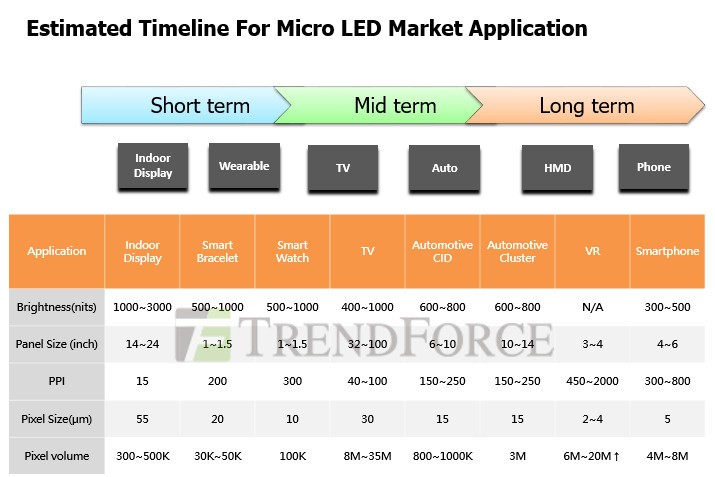Aside from technology advancements and cost reduction in material and equipment, it is also essential to add value and a real wow factor to products in order to facilitate Micro LED commercialization. As Chu suggested, manufacturers can develop integrated solutions or introduce new concepts and functions to add value to products and satisfy consumers’ needs. Looking ahead, how long commercialization will take depends on technology maturity, costs and added-value. It is expected that Micro LED applications may gradually come on the market in the near future.
Micro LED Next Generation Display Industry Market Report- 2Q17
- Micro LED Display and Fine Pitch Display Technology
LED Display Market Overview
· Current Mainstream Technology For Ultra Large Display
· Various Display Technical Analysis
· Fine Pitch LED Display Market Scale Forecast
· Fine Pitch LED Display Supply Chain
· 2016-2017 Fine Pitch Display Market Segments and Positioning
Why We Need Micro LED Display?
· SONY CLEDIS Micro LED Display Lead Market Trend
· SONY CLEDIS Micro LED Display Specification Introduction
· Micro LED Display and Fine Pitch LED Display- Product Analysis
· Micro LED Display Advantages
· Micro LED Display and Fine Pitch LED Display- Cost Analysis
· Micro LED and Fine Pitch LED Display- Sales Price
· Micro LED Goes From Niche Into Mainstream? Micro LED Display Market Forecast
LED Chip Solution
· LED Manufacturing Analysis- Micro LED Display and LED Display
· LED Specification- LED Display
· LED Specification- Micro LED Display
· Micro LED Display Product Concept and Design
· LED Technology Challenge Analysis For Micro LED Display
Driver Solution
· Key Factors in Driver For Micro LED Display
· Driver Solution- Active Drive and Passive Drive
· Active Drive- Less Power / High Refresh Rate, For Large-size Displays
· PWM Technology on Change of Color
· Scanning And Frame Rate
· Drive IC- Micro LED Display and LED Display
· Driver IC Technology Challenge Analysis For Micro LED Display
· Integrated Driver IC Technology Challenge Analysis
PCB Solution
· Key Factors in PCB For Micro LED Display
· PCB Manufacturing Process
· PCB Manufacturing Process Analysis
· PCB Yet to Meet Requirement on Micro LED Display
· PCB Manufacturing Analysis- Micro LED Display and LED Display
· PCB Technology Challenge Analysis For Micro LED Display
If you would like to know more details, please contact:
Joanne Wu (Taipei)
joannewu@trendforce.com
+886-2-8978-6488 ext. 912





 CN
TW
EN
CN
TW
EN





